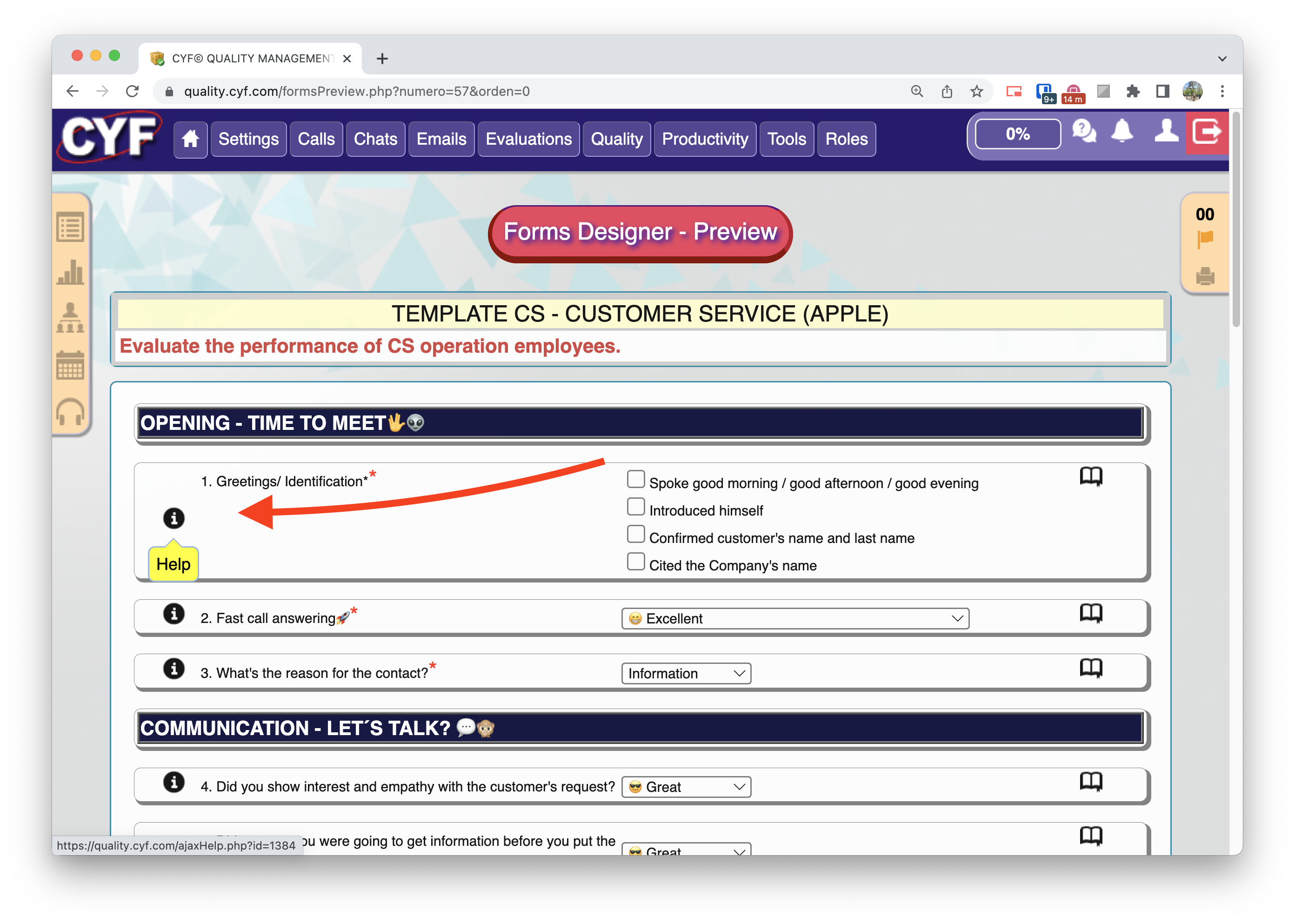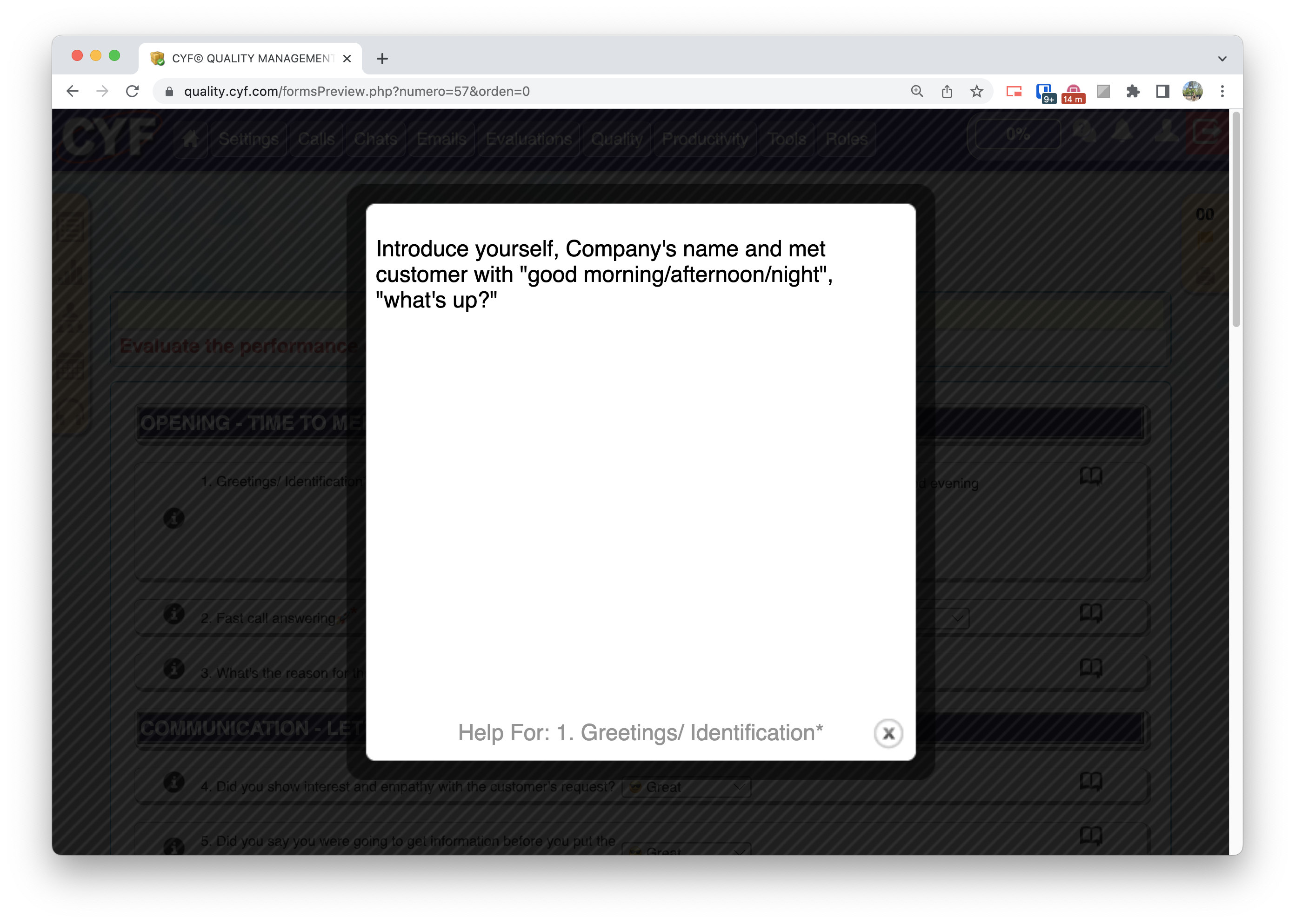How to apply feedback efficiently in call center quality assurance?
The evaluations made by the quality assurance team are very important to measure the level of quality of a certain agent, team, operation or company.
However, what really improves quality are the actions taken after that evaluation…
We are talking about a good coaching process and also training.
Now, see in this content the main tips on how to apply feedback efficiently.
The importance of feedback in the call center
- How to understand the positive and negative aspects in customer service?
- How do you know which aspects to focus on?
Feedback is one of the main tools to understand and improve a person’s performance in the business world.
The importance of feedback in quality assurance is even greater, since the person who is going to receive it (the agent) is in constant contact with your client, becoming the main image and causing first impressions to several consumers about the company for which he is working.
But of course there are different ways to apply feedback efficiently. Not all evaluations will require personal contact or videoconference with the agent, you can focus your efforts on people with greater difficulty and who require a higher level of attention. The ideal is to use a system in which problematic calls are automatically separated and delegated to personal feedback, as is the case in CYF Quality.

Who should apply feedback in a call center?
The ideal professional to apply the feedback is the supervisor or team leader, here are some reasons:
1. Closer contact with agents
The supervisor is a person who is more in contact with the agents, therefore, he knows better the history of each of them.
In addition, they are also capable of identifying strategic moments for the application of feedback, such as customer service gaps, for example (times when the operation has few calls).
2. Trained to be leaders
Unlike quality monitors, supervisors, in theory, have more knowledge and ability to apply coaching, because they are trained from the beginning to lead teams, which makes it easier to handle this type of situation.
3. Greater number of professionals
We take as an example 20 agents, for 1 supervisor, and 60 agents, 1 quality monitor is needed…
Imagining an operation of 1000 agents, we need:
- 50 supervisors
- 16 monitors
The greater number of supervisors justifies even more that the application of the feedback is made by this professional.
4. Distance
In most cases, the supervisors’ distance is much shorter than that of the quality monitors, which further justifies the application of feedback by this category of professionals.
There are some cases where the quality assurance team is in separate rooms from the operation, which causes the movement of agents, making the operation more chaotic.

In which evaluations should coach be applied?
Coaching is that moment that goes beyond common feedback, you will use this coaching strategy for more important cases, such as:
- Critical mistakes
- Low and zero scores
This process usually takes longer, where you must be available to be alone with the agent and then explain the reasons for that conversation, always with the aim of improving that person’s level and productivity.

Coaching- the continuous improvement cycle
Coaching is the process that comes after feedback, being the training cycle, and here are some tips to make coaching even better:
Accompany agents who need coaching with continuous evaluation of performance and application of feedback until they reach the desired level.
In the middle of the coaching cycle there may be several actions, such as participation in recycling, training, “free riding” (staying with good agents) or other types of actions.

Is it really necessary to apply feedback in evaluations with a good grade?
We know that congratulating agents who have done well in customer service is very important, however, it is not always necessary to have a face-to-face or videoconference conversation to congratulate them. Let the most delicate and important feedback be done in person and the rest, apply it electronically, this will considerably increase the productivity of your operation. And of course, you can put all this into practice with CYF Quality.
For good agents, focus on building good career development plans, creating ways to reward them and even give them bonuses, always using quality core qualifications, to create a customer-centric culture.
How does electronic feedback work?
As explained above, electronic feedback is an essential resource for:
- Operations with a volume of evaluations higher than the standard.
- Customer services that had no major flaws or lower scores.
With this feature, you allow agents to access evaluation results directly from their computers, without the need for a supervisor or quality monitor to apply the feedback.
A very important detail in this process is the response… Since there will not be a leader applying the feedback, it is very important that the contestation is allowed in this type of feedback, because in this way it allows the agents to express their opinion and feel involved in the process.

How does face-to-face feedback work?
Face-to-face feedback works the way you are used to, in which the supervisor or monitor applies the feedback.
However, there is a big problem that affects the operations in this process, the lack of time.
Lack of time means that many team leaders do not apply the feedback, or worse, that many leaders sabotage the feedback, saying that they applied, but in fact they did not apply it.
For these types of problems, we have two suggestions that you can apply to your CYF Quality.
- Lack of time to apply the Feedback
For this problem, we suggest that you use a minimum score.
Let’s imagine that ratings below 80 are considered poor ratings for your operation…
In this feedback flow, the agents who obtained a score equal to or greater than 80 will use the electronic feedback flow, where they will be able to sign the evaluation on their machine, without having to go to the supervisor, to obtain a good grade.
Low ratings will now need to be enforced by the team supervisor.
If you are interested in learning how to configure this flow, click here.
- Lack of application of feedback by supervisors
If your problem is the lack of commitment of the supervisors with the application of the feedback, you need to have a system that really guarantees that the application was carried out.
With CYF Quality we guarantee that this process is made, since the agent must take an application password to his supervisor, only with this the team leader will be able to mark it as signed or make objections (if you allow it).

How to track unapplied feedback?
The only way to guarantee that each operation works correctly is to have ways of evaluating the productivity of the agents and also of the supervisors, in case they are the ones who apply the feedback.
It is essential that you have some easily accessible reports to accompany your operation, such as:
- Evaluations that have not yet been seen
- Evaluations that are pending to be signed
- Summary of feedbacks, where you will present which evaluations had or did not apply feedback
How to avoid unfounded contestations?
Before any technique, the first thing to do is pay close attention when evaluating the performance of an agent…
Many contestations end up being unfounded due to lack of attention from the quality monitor, in which the errors are considered simple.
If this is not your problem, we always recommend that you have a kind of quality assurance “knowledge base”, where agents can have access to it at the time of feedback, always advising them to consult the knowledge base before any reply.

With CYF Quality, you will be able to create your quality knowledge base with the help buttons, which are located next to each of the elements of your form, making them easily accessible to agents.

Conclusion
The feedback process is one of the most important for the culture of evolution and growth, not only of your call center, but of all the professionals involved…
It is essential to have good methods to ensure that feedback is applied and that poor performers are closely monitored.
All the resources mentioned in this content, work with CYF Quality, our quality assurance software that even has a free version.
But now tell me, how do you currently track applied feedbacks?
Do you have any advice to help us in this post?
Leave us your opinion here in the comments.